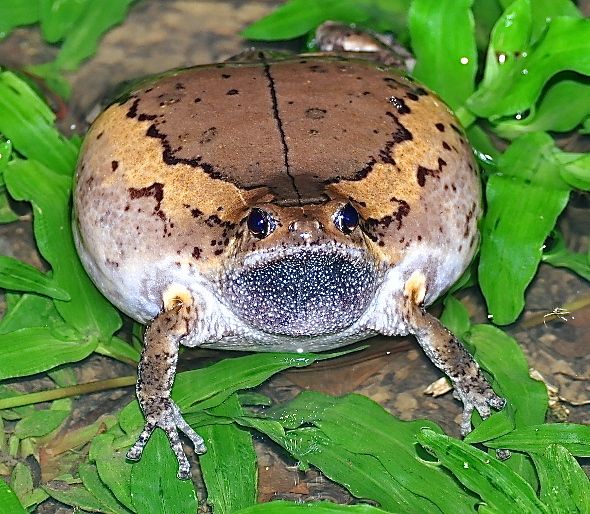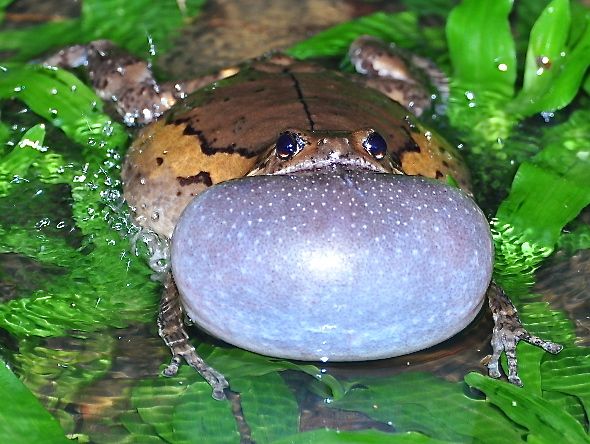Johnny Wee encountered a Clouded Monitor (Varanus nebulosus) in Singapore’s Venus Drive in May 2014 (above). Clamped tight in its mouth was a Banded Bullfrog (Kaloula pulchra). The bullfrog was countering the monitor’s attempt at swallowing it by inflating its body. For 15 minutes the monitor tried its utmost to swallow its prey but failed. It eventually gave up and the bullfrog went free.
Banded Bullfrogs are not native to Singapore. Commonly sold in pet shops, they are regularly released in our parks and forests during certain religious occasions.
This is what Dr Leong Tzi Ming has to say when shown the image:
“Clouded Monitors typically scrape away the top soil of the forest floor in search of earthworms and insects with the help of their keen sense of smell. This particular Banded Bullfrog may have been inadvertently excavated by the monitor lizard as it was foraging.
“However, what appears to be a spongy and juicy meal actually turned out to be as tough to tackle as a slimy rubber ball! When attacked, the Banded Bullfrog is capable of secreting noxious and sticky slime all over its skin, plus inflating its body in self defence.
“Habitually, male Banded Bullfrogs will inflate themselves when they feel the urge to breed after heavy rains (above).
“The air is then transferred from their lungs to inflate the balloon-like vocal sac to produce its characteristic bellows (above).
“A video clip of a male calling (documented by Leong Tzi Ming in December 2012) may be previewed below.”
Johnny Wee (top image) & Dr Leong Tzi Ming (other images, video)
Singapore
June 2014


![CloudedMonitor-BandedBullFrog [JWee]](https://besgroup.org/wp-content/uploads/CloudedMonitor-BandedBullFrog-JWee.jpg)









2 Responses
Actually, it’s the American Bullfrog (Lithobates catesbeianus) that is sold in pet shops (as live food for carnivorous fishes) and in markets for human consumption, and finds its way into nature areas through release by humans. The Banded Bullfrog on the other hand, is not thought to be native, but has been well-established for more than a century without any apparent ecological consequences.
Amazing! I thought that the monitor’s mouth would still have been big enough to accommodate the inflated frog! Guess I was wrong!